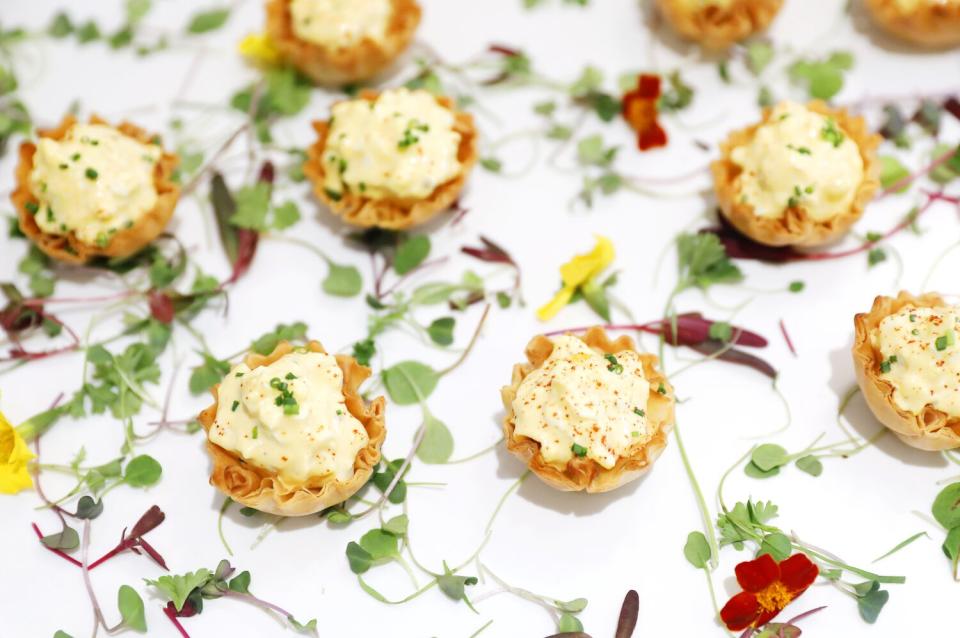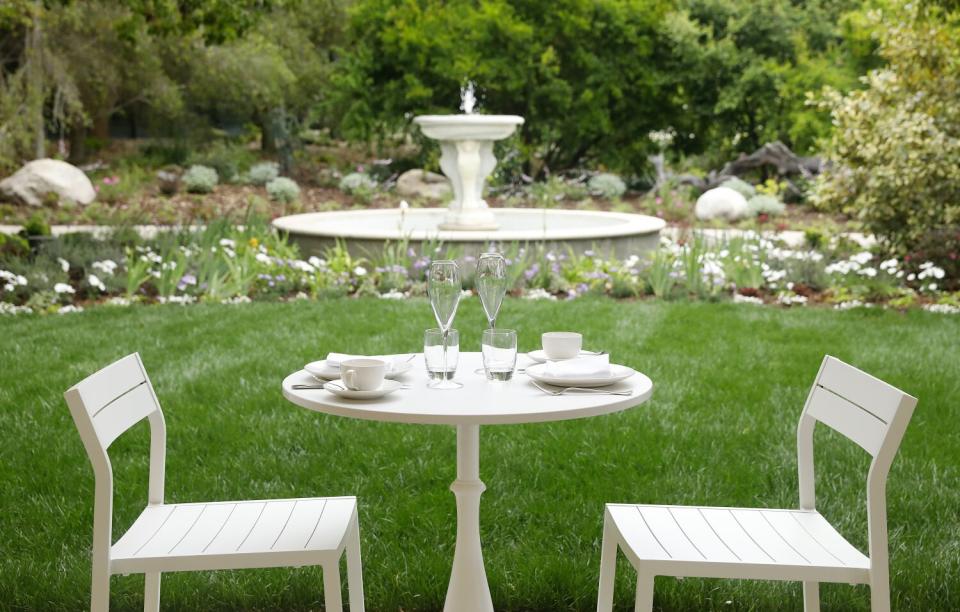The Huntington's renovated 1911 tea room reopens after a three-year closure

If man caves existed in the early 20th century, then American railroad tycoon Henry Huntington had one of the finest. Built in 1911 on his sprawling San Marino estate, Huntington’s social retreat — just a short walk through the rose arbor from his mansion — was built in a classical revival-style outbuilding containing a billiard and card room and a two-lane bowling alley.
On Wednesday that very same building will reopen as the Huntington Library, Art Museum and Botanical Gardens’ thoroughly renovated Rose Garden Tea Room. As reinventions go, the new space is designed by Stephen J. Farneth’s Architectural Resources Group to be a crown jewel nestled in the Huntington’s verdant grounds.

During a recent tour, Farneth explained how the shutdown necessitated by the COVID-19 pandemic in March 2020 provided the opportunity for a much-needed upgrade to the space, which had served as a tea room since the Huntington opened to the public in 1928, a year after its founder's death.
“Our marching orders were to preserve the building but then to develop additional dining spaces,” said Farneth. “And we really wanted some outdoor dining because the pandemic made it clear that was the direction of the future.”
This thinking led to the tea room’s most stunning addition — an alfresco pavilion looking out onto the lush Shakespeare Garden and featuring a 17th century Italian fountain that had been discovered in storage on the grounds.
“People who have visited the previous tea room felt it was a very special spot for making memories,” said Huntington President Karen Lawrence. “And we want that experience, and that sense of beauty and inspiration, to be available to a lot of people.”
With seating for up to 164 people, the Rose Garden Tea Room has its largest capacity to date. Across a walkway to the west of the Shakespeare Garden, an additional dining space has been upgraded, with limited outdoor seating flanking the herb garden. A modernized kitchen provides service to both garden spaces and the main indoor tea room — with its original trim and windows, as well as its refurbished ornate fireplace and mantel.

Lawrence said that when the construction team initially opened up the main dining room walls, they found a bridge score pad and playing cards inside.
“It was a strange kind of time capsule,” Lawrence said of an era when the room was about the male connections between Huntington and his friends.
That era gave way to a more egalitarian incarnation as the Huntington transformed into a collections-based educational institution. In the early days, the tea room served lunch to staff, researchers and guests. By the 1940s it offered bread and butter with jam, English muffins with marmalade and lettuce-and-mayonnaise sandwiches to a broader swath of visitors. English-style afternoon tea service was not offered until the 1980s, when it became the norm.
Traditional tea service has been ramped up with the opening of the Rose Garden Tea Room. The staff partnered with L.A.-based tea importer Art of Tea to curate a list of tea that includes Earl Grey Crème, Green Pomegranate, French Lemon Ginger and Summer Peach.
For $62 per person, tea is served with house-made scones (one is flecked with rich butterscotch), as well as a selection of savory finger sandwiches and delicate sweets created by executive chef Jeff Thurston and pastry chef Luis Perez.

The menu will change seasonally, but for the opening it features cucumber sandwiches with dill cream and peppercress, a tarragon chicken salad sandwich, smoked salmon with dill cream cheese and caviar and a flaky deviled egg salad phyllo cup.
The food is served on a three-tiered silver platter. Chocolate-covered strawberries adorn the top, and desserts like banoffee tart with dulce de leche, banana jam and caramel crunch and chocolate brown butter almond cake lounge in the center. An assortment of three rich spreads for the scones is served on the side: clotted cream, lemon curd and marmalade.
The signature Huntington Tea is $75 per person.
“It’s a bit of an elevated experience, which is going to include a splash of champagne,” Thurston said. “We’re doing a chocolate bonbon with the Huntington logo on there. And then it comes with like a little lobster cup, which is going to be fantastic.”

There is also market-price caviar service, with golden trout roe, California sturgeon and sustainable golden osetra, which can be accompanied with wine, by the glass or bottle. Thurston describes it as a classic “old-school” setup in a new-world environment.
Plush green chairs with sleek wooden armrests and scattered white-marble-topped tables make for a peaceful scene, noticeably lacking in the hectic sound of traffic and horns that serves as the soundtrack for most of the city’s outdoor dining experiences. The only honking is that of Canadian geese, mixed with the trill of bird calls and patter of the garden fountain.
Servers have been trained in the minute particulars of brewing a quality pot of tea. Hot water towers are kept at 206 degrees, but according to Stephanie Sanders, regional district manager for Bon Appétit Management Company, who helped train the staff, green tea is best brewed at between 180 and 185 degrees, so water is taken out to sit before certain teas are steeped.
Read more: 13 unmissable arts events we're looking forward to this summer
Measured scoops are doled out for 14-ounce pots and larger 21-ounce pots. Staff can explain details like how the shape of a tea leaf and the length of time that it was oxidized affect its flavor profile.
The opening Wednesday is for members only; the tea room opens to the public May 24. Reservations have rolled out on Open Table; tables are hard to score for the first few weeks. Eventually, however, the opening buzz will die down and visitors can stroll in at their leisure and sit down with a good book — or a good friend — for a spot of tea and a bite to eat.
This story originally appeared in Los Angeles Times.

